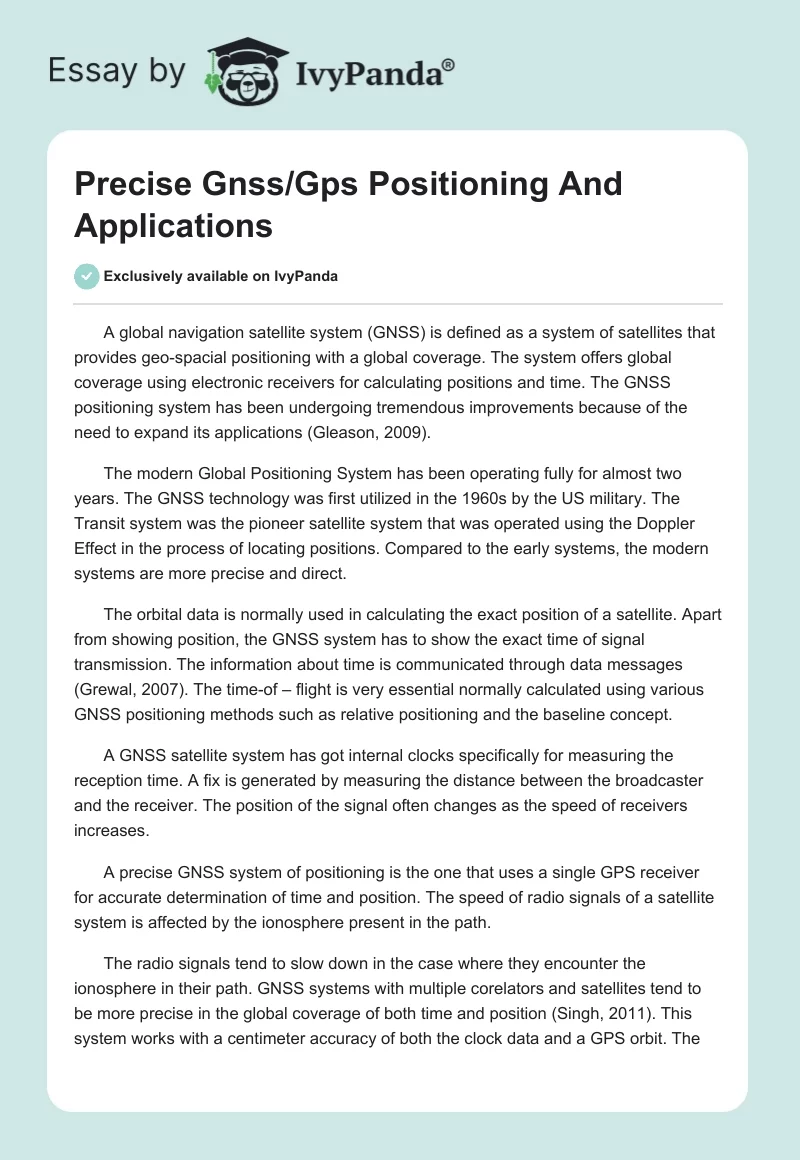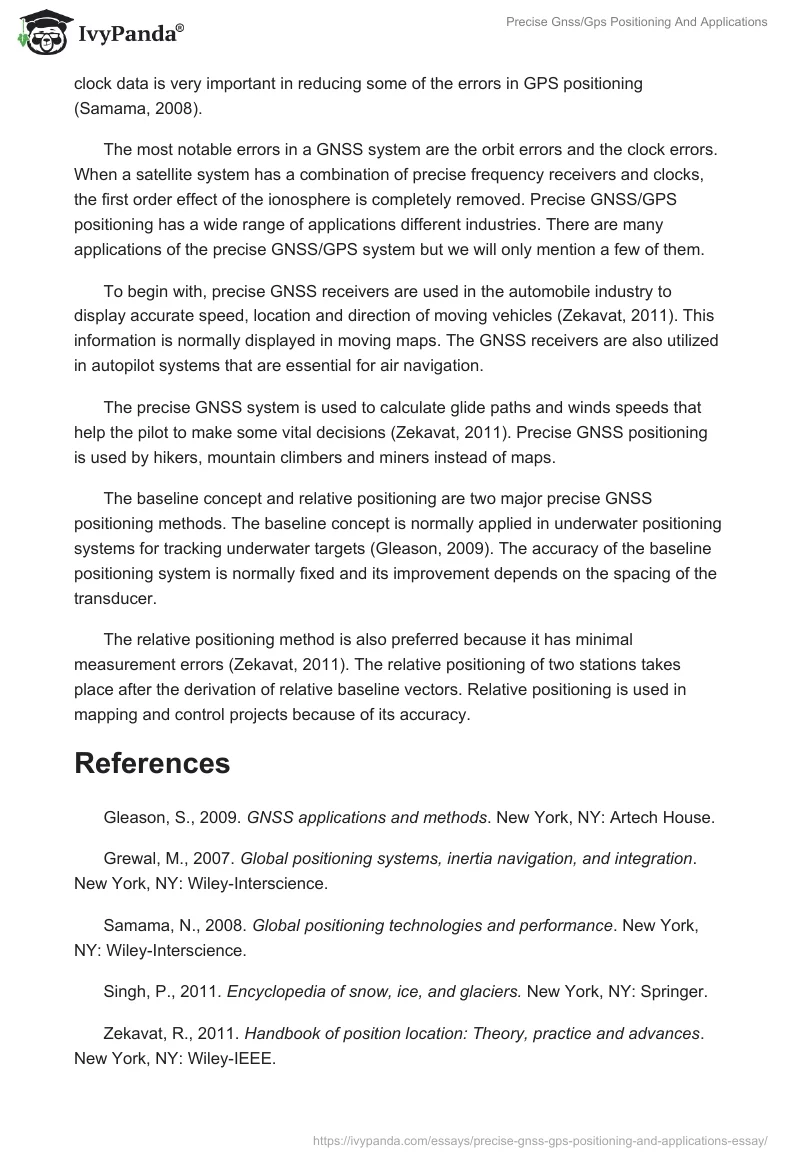A global navigation satellite system (GNSS) is defined as a system of satellites that provides geo-spacial positioning with a global coverage. The system offers global coverage using electronic receivers for calculating positions and time. The GNSS positioning system has been undergoing tremendous improvements because of the need to expand its applications (Gleason, 2009).
The modern Global Positioning System has been operating fully for almost two years. The GNSS technology was first utilized in the 1960s by the US military. The Transit system was the pioneer satellite system that was operated using the Doppler Effect in the process of locating positions. Compared to the early systems, the modern systems are more precise and direct.
The orbital data is normally used in calculating the exact position of a satellite. Apart from showing position, the GNSS system has to show the exact time of signal transmission. The information about time is communicated through data messages (Grewal, 2007). The time-of – flight is very essential normally calculated using various GNSS positioning methods such as relative positioning and the baseline concept.
A GNSS satellite system has got internal clocks specifically for measuring the reception time. A fix is generated by measuring the distance between the broadcaster and the receiver. The position of the signal often changes as the speed of receivers increases.
A precise GNSS system of positioning is the one that uses a single GPS receiver for accurate determination of time and position. The speed of radio signals of a satellite system is affected by the ionosphere present in the path.
The radio signals tend to slow down in the case where they encounter the ionosphere in their path. GNSS systems with multiple corelators and satellites tend to be more precise in the global coverage of both time and position (Singh, 2011). This system works with a centimeter accuracy of both the clock data and a GPS orbit. The clock data is very important in reducing some of the errors in GPS positioning (Samama, 2008).
The most notable errors in a GNSS system are the orbit errors and the clock errors. When a satellite system has a combination of precise frequency receivers and clocks, the first order effect of the ionosphere is completely removed. Precise GNSS/GPS positioning has a wide range of applications different industries. There are many applications of the precise GNSS/GPS system but we will only mention a few of them.
To begin with, precise GNSS receivers are used in the automobile industry to display accurate speed, location and direction of moving vehicles (Zekavat, 2011). This information is normally displayed in moving maps. The GNSS receivers are also utilized in autopilot systems that are essential for air navigation.
The precise GNSS system is used to calculate glide paths and winds speeds that help the pilot to make some vital decisions (Zekavat, 2011). Precise GNSS positioning is used by hikers, mountain climbers and miners instead of maps.
The baseline concept and relative positioning are two major precise GNSS positioning methods. The baseline concept is normally applied in underwater positioning systems for tracking underwater targets (Gleason, 2009). The accuracy of the baseline positioning system is normally fixed and its improvement depends on the spacing of the transducer.
The relative positioning method is also preferred because it has minimal measurement errors (Zekavat, 2011). The relative positioning of two stations takes place after the derivation of relative baseline vectors. Relative positioning is used in mapping and control projects because of its accuracy.
References
Gleason, S., 2009. GNSS applications and methods. New York, NY: Artech House.
Grewal, M., 2007. Global positioning systems, inertia navigation, and integration. New York, NY: Wiley-Interscience.
Samama, N., 2008. Global positioning technologies and performance. New York, NY: Wiley-Interscience.
Singh, P., 2011. Encyclopedia of snow, ice, and glaciers. New York, NY: Springer.
Zekavat, R., 2011. Handbook of position location: Theory, practice and advances. New York, NY: Wiley-IEEE.


